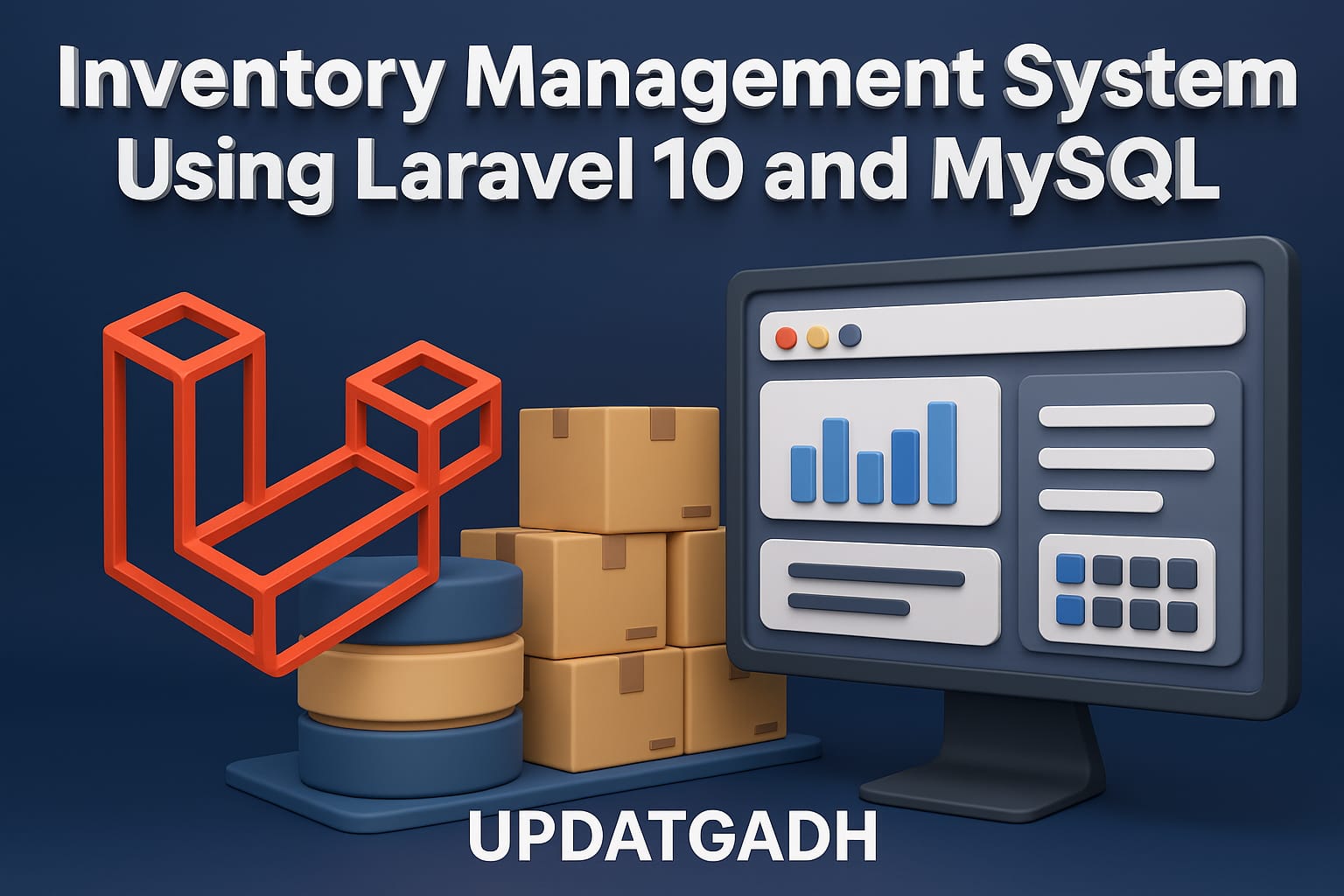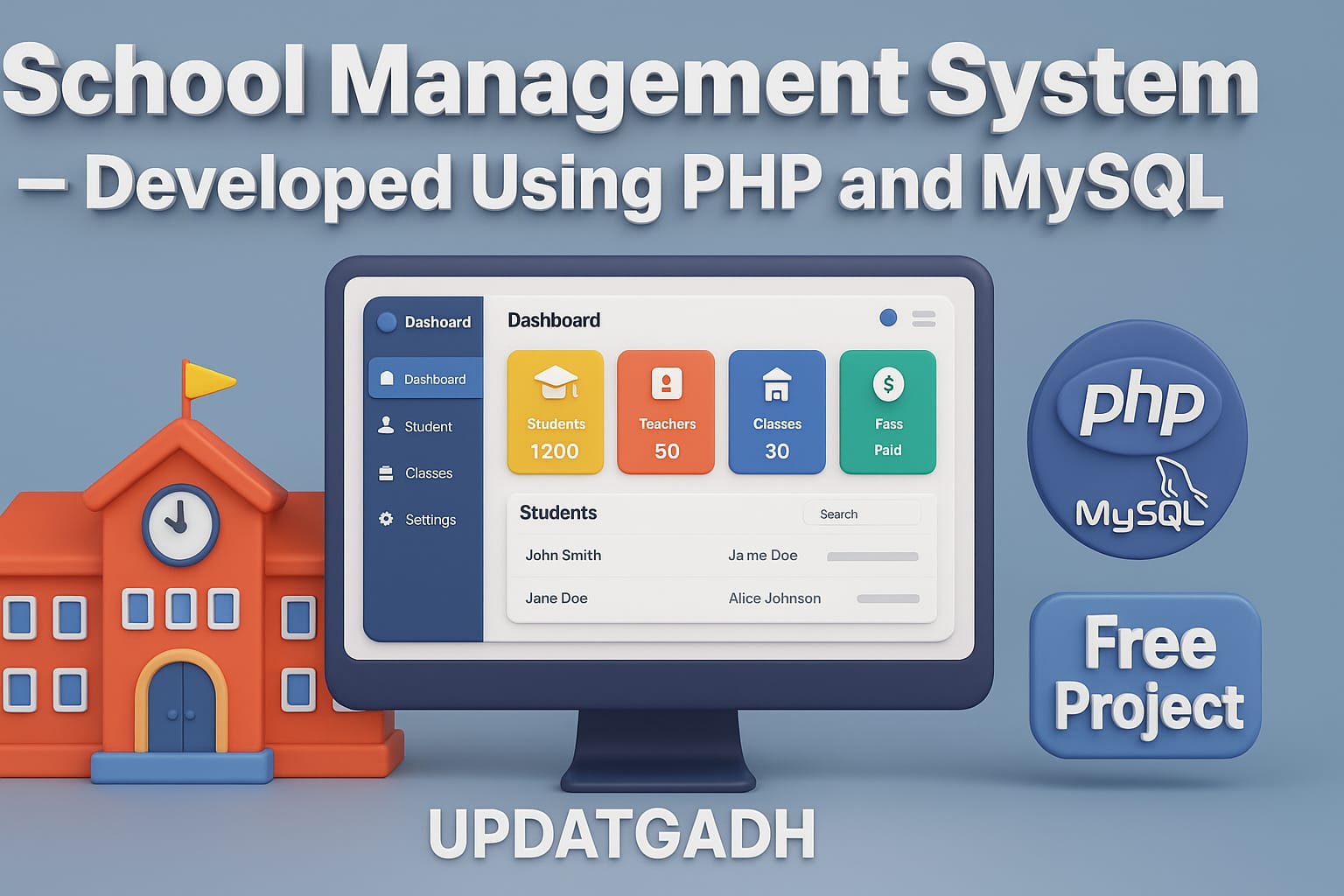
Student Management System CRUD using Java and Spring Boot MVC
Student Management System CRUD using Java and Spring Boot MVC, Spring Data JPA , MYSQL and Thymeleaf Template
Introduction
Are you in need of a streamlined solution for managing student data within your educational institution? Look no further! In this comprehensive guide, we’ll walk you through the process of developing a Student Management System with CRUD (Create, Read, Update, Delete) functionality using Java and Spring Boot MVC. Let’s dive in!

Step 1: Setting Up the Project
The Student Management System CRUD is a straightforward yet powerful application designed to streamline the management of student data. Built using Java and Spring Boot MVC, along with Spring Data JPA, MySQL, and Thymeleaf Template Engine, this application offers essential CRUD (Create, Read, Update, Delete) functionality for efficiently managing student records
Step 2: Incorporating Essential Features
A robust Student Management System encompasses functionalities like adding, updating, deleting, and viewing student records. Develop an entity class for students, defining attributes such as name, enrollment number, and department. Implement CRUD operations by establishing repository interfaces, service classes, and controller endpoints to handle HTTP requests seamlessly.

Key Features:
- Adding New Students: Easily add new students to the system by providing necessary details such as name, enrollment number, and department. The application ensures seamless data entry and validation to maintain data integrity.
- Viewing All Students: Gain a comprehensive overview of all students currently registered in the system. The application presents student information in an organized manner, facilitating easy access and reference.
- Editing Existing Students: Update student details as needed, ensuring that the information remains accurate and up-to-date. With just a few clicks, users can modify student records without hassle.
- Deleting Students: Remove students from the system when necessary, providing a simple yet effective way to manage student data. The application handles deletion operations securely, preventing accidental data loss.
Step 3: Preparing Software and Tools
Backend:
- Java 17 (Open JDK): Java programming language version 17, an open-source implementation of the Java Platform.
- Spring Boot: A powerful framework for building Java-based applications with minimal configuration.
- Hibernate JPA: An object-relational mapping framework for Java applications, providing a bridge between Java objects and a relational database.
Template Engine:
- Thymeleaf: A modern server-side Java template engine for web and standalone environments, capable of processing XML, HTML, JavaScript, and CSS.
Frontend:
- HTML: The standard markup language for creating web pages and web applications.
- CSS: Cascading Style Sheets, used for styling HTML elements and enhancing the visual appearance of web pages.
- Bootstrap: A popular front-end framework for building responsive and mobile-first websites and web applications.
Database:
- MySQL Database: A widely used open-source relational database management system, known for its reliability, performance, and scalability.
Dependency Management Tool:
- Maven: A build automation tool used primarily for Java projects to manage project dependencies, build processes, and project documentation.
IDE:
- IntelliJ IDEA: An integrated development environment (IDE) for Java development, offering advanced features such as code completion, refactoring, and debugging tools to enhance productivity.
Step 4 :Technologies Used
- Java and Spring Boot MVC: Java provides the backbone of the application’s logic, while Spring Boot MVC simplifies the development of web applications by offering convention-over-configuration principles.
- Spring Data JPA: Integrating seamlessly with Spring Boot, Spring Data JPA simplifies data access layer development by providing powerful features for interacting with databases.
- MySQL: As the chosen database management system, MySQL offers reliability and scalability, making it an ideal choice for storing student records securely.
- Thymeleaf Template Engine: Thymeleaf facilitates dynamic content generation on the server-side, enabling the creation of responsive and interactive web pages for a seamless user experience.
Step 5: Running the Web Application
Upon completing the implementation of CRUD operations for your Student Management System, deploy the web application locally to validate its functionality. Utilize the Maven plugin to build and package your project into a .jar file, then initiate it using the embedded Tomcat server provided by Spring Boot. Access the application via your web browser by navigating to http://localhost:8080, allowing you to interact with the student management system effortlessly.
- Build the project using Maven or Gradle to resolve the dependencies.
- Deploy the project onto the servlet container (e.g., Apache Tomcat).
- Ensure the database is running and accessible.
- Start the servlet container and access the web portal using the appropriate URL.
Step 6: Screenshots





Step 7 : Buy and Download [ Note: Project Only for Educational Purpose]
- Virus note: All files are scanned once-a-day by updategadh.com for viruses, but new viruses come out every day, so no prevention program can catch 100% of them
- FOR YOUR OWN SAFETY, PLEASE:
- 1. Re-scan downloaded files using your personal virus checker before using it.
- 2. NEVER, EVER run compiled files (.exe’s, .ocx’s, .dll’s etc.)–only run source code

- Download Free this Project :-Click Here
- Download All Free Project :- Click here
- Check more Projects :- https://www.youtube.com/@Decodeit2/playlists
- Check 10+ ML and Python Projects
- Check 50+ JAVA Projects with Source Code

Document and Reports
This document file contains a project Synopsis, Reports, and various diagrams. Also, the abstract pdf file is inside the zip and you can modify it accordingly. Documents and Reports take 2-3 days to create as per the user Requirements
Latest Post
Conclusion
In conclusion, developing a Student Management System with CRUD functionality using Java and Spring Boot MVC is a straightforward endeavor that can significantly enhance the efficiency of educational institutions in managing student data. By following the outlined steps in this guide, you can seamlessly implement a robust and user-friendly system for handling student records. Take the initiative today and witness the positive impact it can have on your organization’s operations!
Meta Description: Discover how to create a Student Management System with CRUD functionality using Java and Spring Boot MVC. Follow our comprehensive guide for a seamless implementation process.
Keywords
| student management system |
| free student management system |
| student management system free |
| student management system open source |
| student management system software |
| student management system project in java |
| what is a student management system |
| student management system salesforce |
| salesforce student management system |
| school student management system |








Post Comment